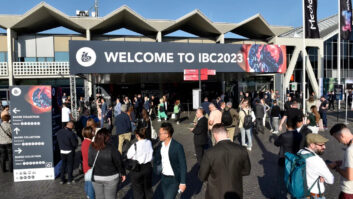Not long ago, technology in the video industry was an area unto itself. Then, huge and rapid consumer use of general purpose computing invaded our lives in almost every way. These historic progresses in technology have impacted almost every area of modern technology today. The ‘traditional video technology train’ and the ‘consumer computing train’ are colliding and changing our industry at unparalleled levels.
At IBC2014, you’ll find the beginning of the intersection between products designed for the traditional video industry and products being driven by consumer adoption of broader computing trends. At one end, traditional companies believe IT is a fad and TV stations are not going to abandon traditional technology. At the other are companies looking at the IP side, the big trends in IT, venture capital, Silicon Valley – believing this is the way.
The people to watch are the ones in the middle who can synergise the new with traditional video technologies to make something that wasn’t imaginable before. The industry needs them. Why?
We are all at the mercy of what consumers are prepared to watch and pay for – or what advertisers are willing to pay for. No more, no less than that.
The clear, unmistakable reality today is that consumers are not prepared to pay as much for their content as they were yesterday. The internet has caused the value of a minute of video to go down dramatically. Finding ways to produce video cheaper is a huge dilemma for our industry.
We are driven to focus on cost, but the big cost is not the equipment anymore – it is the cost of people that matters most.
That is why, for our customers, live video is critically important. It is far quicker and thus cheaper to produce one hour of live video than one hour of edited video. It is anywhere from five to 20 times more cost effective.
However, if you lose one show or take longer as a result of choosing a cheaper product, it is not worth the money you saved in equipment.
Equally important is the ability to produce more content and reach audiences in different ways. If you’re paying to produce a show, you need to find more ways to make money with it.
Social media is way underrated as a video distribution mechanism. While TV requires you to move to get it, social media platforms allow it to be pushed to people wherever they are.
You can send highlights directly to your viewers instead of going through the marketing exercise of getting them to watch your show. If you’re relying on advertisers, it makes your content far more valuable.
In many ways, the future of video will involve short snippets being pushed to consumers rather than getting them to sit down and watch. The future belongs to those who can synergise the traditional with the new to create new ways to navigate through the unmistakable realities of our industry.






